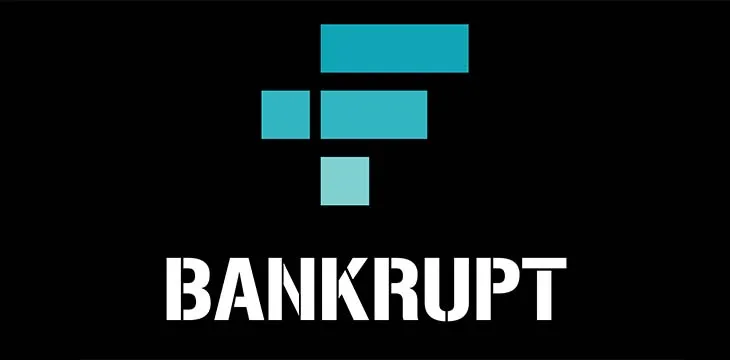|
Getting your Trinity Audio player ready...
|
A day after the Bahaman authorities announced the arrest of the disgraced former FTX CEO Sam Bankman-Fried, the United States House Committee on Financial Services heard of shocking mismanagement at the company.
Appearing in a committee hearing on December 13 titled “Investigating the Collapse of FTX,” John J. Ray III, the bankruptcy CEO of FTX, reaffirmed and expanded on an already damning earlier statement. On November 17, upon taking over FTX after Bankman-Fried had stepped down, Ray said he’d never seen such a “complete failure of corporate controls and such a complete absence of trustworthy financial information as occurred here.”
Asked by the committee on Tuesday to clarify this previous comment, Ray explained that he was referring to an “utter lack of record keeping and no internal controls whatsoever.”
He emphasized the lack of record-keeping that distinguished FTX from the other bankruptcies he managed, including Enron.
The Enron comparison was a point picked up by several committee members, and Ray made the distinction clear in his response: “The crimes that were committed [at Enron] were highly orchestrated financial machinations by highly sophisticated people to keep transactions off balance sheets,” in contrast, Ray continued, the crimes of FTX were “not sophisticated at all.”
“This is really old-fashioned embezzlement,” Ray said. “This is just taking money from customers and using it for your own purpose.”
This withering assessment of FTX’s modus operandi will take many of the headlines, but during his testimony, Ray repeatedly focused on the seemingly ramshackle, even amateurish nature of the operation, ranging from larger issues like a complete lack of documents for his team to work with, and the paperwork that does exist cannot be trusted, to the almost comical quirk that a multi-billion-dollar company used QuickBooks—an accounting software geared towards small- and medium-sized companies.
A missing witness
Bankman-Fried was also scheduled to appear before the committee by video, but due to his Monday arrest and impending extradition to face charges in the U.S., he was naturally a notable absentee.
Chairwoman Maxine Waters stated that while the committee was disappointed not to hear from Bankman-Fried, “he must be held accountable. The American public deserves to hear directly from Mr. Bankman-Fried about the actions that’ve harmed over one million people and wiped out the hard-earned life savings of so many.”
The arrest might have been sudden and inconvenient for the scheduled hearing, but it was not unexpected.
When Bankman-Fried arrives in the U.S., he will face eight criminal charges filed by the U.S. attorney’s office for the Southern District of New York, including wire fraud, wire fraud conspiracy, and conspiracy to commit money laundering.
The Securities Exchange Committee (SEC) also filed charges, alleging on Tuesday that Bankman-Fried orchestrated a scheme to defraud equity investors in FTX and that investigations into other securities law violations, entities, and persons are ongoing.
SEC Chair Gary Gensler didn’t mince words when announcing the charges, stating, “Sam Bankman-Fried built a house of cards on a foundation of deception while telling investors that it was one of the safest buildings in crypto.”
Catastrophic management failure
Despite Bankman-Fried’s absence, the House Committee on Financial Services hearing went ahead as planned, with one congressman wryly commenting that the more trustworthy witness was present anyway.
In his opening statement, Ray spoke of the collapse of FTX stemming from: “an absolute concentration of control in the hands of this small group of grossly inexperienced and unsophisticated individuals, who failed to implement virtually any of the systems or controls that are necessary for a company entrusted with other people’s money or assets.”
He went on to expand on some of the unacceptable management practices that he has identified so far, including:
- The use of computer infrastructure that gave individuals and senior management access to systems that stored customer assets without security controls to prevent them from redirecting those assets.
- Storing of private keys that access hundreds of millions of dollars in digital assets without effective security controls or encryption.
- The ability of Alameda Research to borrow funds from FTX to be utilized for its own trading or investments without any effective limits whatsoever.
- The commingling of assets and lack of complete documentation for transactions involving nearly 500 separate investments made with FTX group funds and assets.
Ray also placed the blame for this laundry list of management failures squarely on Sam Bankman-Fried, putting him atop the culpability pyramid.
Even more damningly for Bankman-Fried, when asked if there’s a way to know if the transfer of funds from FTX to Alameda could have been a mistake, Ray said “I don’t find any such statements to be credible.”
However, when pressed later in the hearing on how intentional he thought all the ‘mistakes’ in accounting were, he stopped short of directly saying Bankman-Fried was guilty of fraud.
Ray’s takeaways
FTX’s bankruptcy CEO admitted that much is still unknown at this relatively early stage, but he did elaborate on some of his early findings. Some of the key takeaways from Ray’s testimony to the hearing, with regard to the inner working of the FTX group, are as follows:
- Customer assets of ftx.com were commingled with assets from the elevated trading platform.
- Alameda used client funds to engage in margin trading, which exposed customer funds to massive losses.
- The FTX group went on a spending binge and 2021-2022, during which $5 billion was spent on a range of businesses and investments, “many of which may only be worth a fraction of what was paid for them.”
- Loans and other payments were made to ‘insiders’ of the company in excess of $1.5 billion.
- Alameda’s business models as a market maker required funds to be deployed to various third-party exchanges, which were inherently unsafe and further exacerbated by limited protections offered in certain of those foreign jurisdictions.
The Alameda connection
Much of the focus and emphasis of the hearing, and the various questions from Committee members, focused on discerning and pinning down the connection between Alameda Research, the hedge fund run by Caroline Ellison, and other FTX entities—as well as the activities of Alameda and how it got its funds.
Chairman of House Financial Services Committee Patrick McHenry quoted Bankman-Fried’s recent defense that “he wasn’t running Alameda or making decisions on the Alameda side,” asking if this seemed an accurate statement. Ray’s response was simply that Bankman-Fried owned 90% of Alameda and that he sees “no distinction whatsoever” in governance between FTX and Alameda—again suggesting that all roads lead to Bankman-Fried.
The committee also sought to clarify how FTX customers might have been protected from Alameda siphoning their funds for its risky (or foolish) investments, with Congresswoman Waters suggesting in her opening query that had FTX fallen within the SEC regulatory umbrella, customer funds would have been segregated and protected from the greedy hands of Alameda.
This point was backed up when LedgerX, a U.S.-based FTX platform for trading BTC and ETH derivatives such as futures, options, and swaps, came into the discussion, with Ray explaining how it has been left out of bankruptcy proceeding because it was a regulated entity (under CTFC rules) and thus user funds were segregated and left intact.
In terms of those assets that Alameda was able to reach, Ray said he had so far been able to recover over $1 billion but suggested that it’s an ongoing process likely to take months to complete.
It remains to be seen exactly how much was lost and how much can be recovered, but from the comments of FTX’s bankruptcy CEO and the extensive charges being brought against Bankman-Fried, it seems there will be many more hearings to come on the FTX collapse.
Follow CoinGeek’s Crypto Crime Cartel series, which delves into the stream of groups—from BitMEX to Binance, Bitcoin.com, Blockstream, ShapeShift, Coinbase, Ripple,
Ethereum, FTX and Tether—who have co-opted the digital asset revolution and turned the industry into a minefield for naïve (and even experienced) players in the market.

 07-04-2025
07-04-2025 





